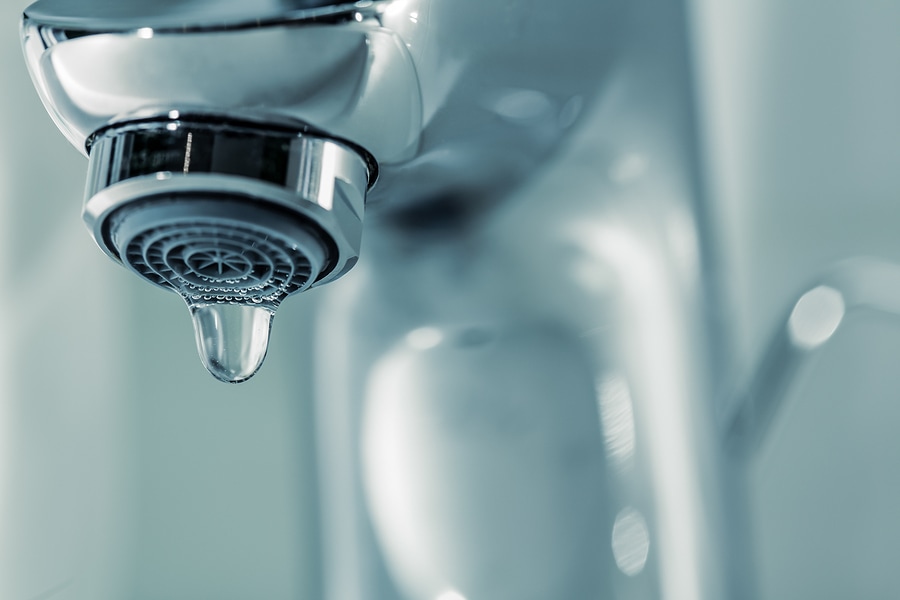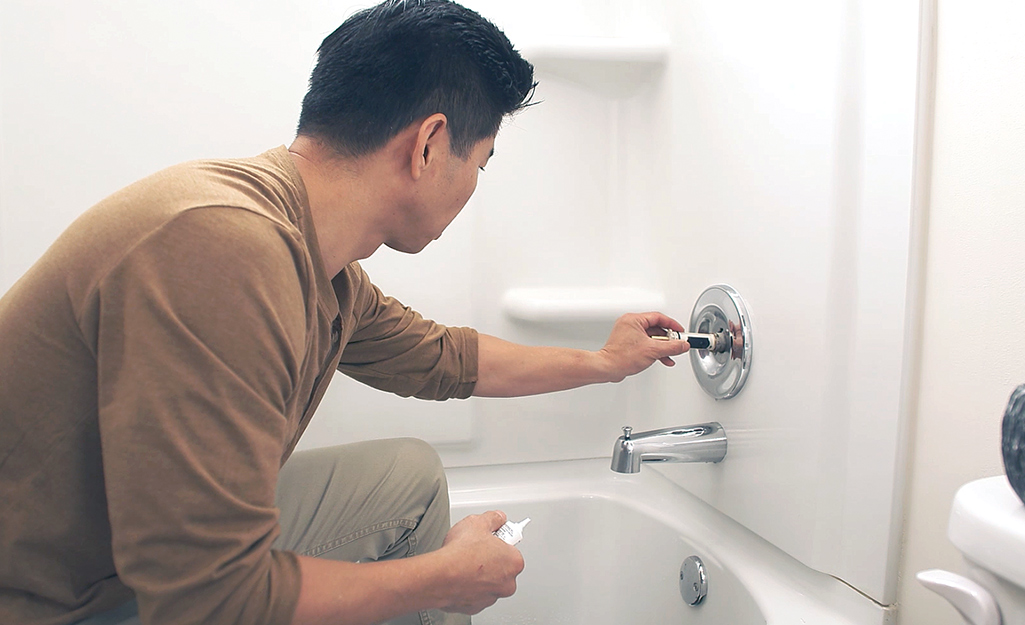The Benefits of Dealing with a Dripping Faucet
The Benefits of Dealing with a Dripping Faucet
Blog Article
The writer is making a number of good points about Why Are My Faucets Dripping (And Can I Fix It Myself)? as a whole in this article followed below.

Dripping taps could look like a small aggravation, but their effect surpasses just the inconvenience of the sound. From wasting water to incurring unneeded economic prices and health risks, overlooking a trickling faucet can result in numerous consequences. In this write-up, we'll explore why it's critical to resolve this usual home issue without delay and efficiently.
Wastefulness of Water
Environmental Influence
Dripping faucets add significantly to water waste. According to the Epa (EPA), a single tap leaking at one drip per second can throw away more than 3,000 gallons of water annually. This not just strains water resources yet likewise impacts communities and wild animals dependent on them.
Financial Costs
Boosted Water Costs
Beyond the environmental effect, trickling taps can inflate water expenses significantly. The gathered wastage over time translates into higher utility expenses, which could have been prevented with timely fixings.
Possible Home Damage
Furthermore, prolonged dripping can lead to harm to components and surface areas surrounding the faucet. Water buildup can trigger discoloration, rust, and even architectural problems if left ignored, resulting in added repair work costs.
Wellness Issues
Mold and Mold Growth
The continuous existence of moisture from a leaking faucet produces an optimal environment for mold and mold growth. These fungis not just jeopardize indoor air quality yet also posture health risks, especially for people with respiratory conditions or allergic reactions.
Waterborne Diseases
Stagnant water in dripping taps can end up being a breeding ground for microorganisms and other virus, raising the risk of waterborne conditions. Pollutants such as Legionella bacteria thrive in stationary water, possibly resulting in serious illnesses when consumed or inhaled.
Do it yourself vs. Expert Repair work
Pros and Cons of Do It Yourself Repair Work
While some might attempt to deal with a leaking tap themselves, DIY repair services feature their own set of obstacles. Without proper understanding and devices, DIY attempts can aggravate the issue or result in insufficient repairs, prolonging the trouble.
Benefits of Employing an Expert Plumber
Working with a specialist plumber ensures that the underlying reason for the leaking faucet is dealt with successfully. Plumbing professionals have the expertise and devices to identify and repair faucet concerns successfully, conserving time and lessening the danger of further damage.
Step-by-Step Overview to Repairing a Dripping Tap
Tools Needed
Before trying to fix a trickling tap, collect the necessary devices, consisting of an adjustable wrench, screwdrivers, substitute parts (such as washers or cartridges), and plumber's tape.
Typical Faucet Issues and Their Solutions
Determine the type of tap and the specific problem creating the drip. Common issues consist of damaged washers, rusty shutoff seats, or faulty O-rings. Describe manufacturer guidelines or online tutorials for step-by-step support on repair work.
Preventive Measures
Regular Upkeep Tips
To avoid dripping faucets, execute routine upkeep such as cleaning aerators, inspecting for leaks, and replacing damaged components immediately. Additionally, think about mounting water-saving devices or updating to extra efficient fixtures.
Value of Prompt Repairs
Dealing with leaking faucets as soon as they're observed protects against more water wastage and potential damage, ultimately saving both water and money in the long run.
Impact on Building Worth
Assumption of Well-Maintained Property
Preserving a building in good condition, consisting of attending to maintenance issues like trickling faucets, enhances its regarded worth and value amongst prospective buyers or tenants.
Impact on Resale Value
Properties with properly maintained plumbing fixtures, consisting of faucets, command greater resale values in the property market. Dealing with trickling faucets can add to a positive perception during property assessments and negotiations.
Environmental Duty
Individual Contribution to Conservation
Taking duty for fixing dripping faucets lines up with more comprehensive efforts toward water conservation and environmental sustainability. Every individual's activities jointly make a considerable effect on preserving precious sources.
Lasting Living Practices
By prioritizing punctual fixings and embracing water-saving habits, people contribute to sustainable living techniques that profit both present and future generations.
Verdict
Attending to a dripping tap goes beyond plain benefit; it's an essential step towards saving water, lowering financial prices, and safeguarding health and wellness and residential property. Whether through DIY fixings or professional support, doing something about it to deal with trickling faucets is a little yet impactful method to advertise liable stewardship of resources and contribute to a healthier, a lot more sustainable future.
How to Fix a Leaky Faucet: Step-by-Step Repair Guide
A leaky faucet may seem like a simple annoyance, but if it's not fixed promptly, that leak could cost hundreds to potentially thousands. From water damage to mold, mildew, and high water bills, even a tiny leak can be catastrophic if left unattended. Damage like this can even affect the overall value of your home, so it's important to take the right approach for leaky faucet repair. You may need the help of a plumber in some cases, but we've got a few tips you can try on how to fix a leaky faucet before calling the pros.
Four Faucet Types
When you're learning how to fix a leaky faucet, the first step is knowing what kind of faucet you're working with! There are four common types.
Cartridge Faucets
Cartridge faucets come in one- or two-handled varieties. In one-handled cartridge faucets, hot and cold water combines in a single cartridge. In the two-handled versions, hot and cold water are controlled separately and mixed in the faucet.
Ball Faucets
Ball faucets have a single lever you push up and down to adjust the pressure and rotate to change the temperature. A slotted metal ball controls the amount of water allowed into the spout.
Compression Washer Faucets
They're the oldest type of faucet, but they're still used in many homes — especially older ones. Compression faucets have two separate handles that, when turned, raise or lower the washer that seals a water valve. This valve stops water from flowing through the faucet when it is turned off.
Disc Faucets
Disc faucets rarely need to be repaired due to their maintenance-free design. The water flow is controlled by two discs — the upper one raises and lowers against a fixed lower disc, creating a watertight seal. If your disc faucet starts leaking, you may need to replace the seals or clean residue buildup from the inlets.
Fixing a Leaky Faucet
Step 1: Turn Off the Water
Whether you're learning how to fix a leaky bathtub faucet or how to fix a leaky kitchen faucet, always turn off the water supply to your working area when you're fixing a leak. The last thing you want is a flood added to your list of things to fix.
Look for the shutoff valves below your sink or around the tub and turn them clockwise to stop the water flow. If your faucet doesn't have shutoff valves, you may need to turn off the water for the whole house. Check to make sure it's off by turning the faucet on. If nothing comes out, you're ready to start the repair.
Step 2: Take Apart the Faucet
How you disassemble your faucet depends on the type of fixture you have. You can use a flathead screwdriver to remove the caps on top of the handle or handles for cartridge and compression faucets. Inside, you should see handle screws. Unscrew these with a screwdriver to remove the handle.
Disc- and ball-style faucets will typically have an inlet screw near the handle, and removing that will reveal the interior of the faucet.
Detach the Valve Stem
For cartridge- and compression-style faucets, you'll see the inner valve stem or cartridge once you remove the faucet handles. If you have a compression faucet, unscrew the brass valve stem. If you have a cartridge faucet, pull out the cartridge. If your cartridge has been in place for a while, it may require some tools or extra force to remove it due to mineral deposits.
Examine and Replace Parts
Once you've removed the parts, check them out to confirm what needs to be replaced. You may see corroded rubber washers, O-rings, stems, or cartridges. On a ball-style faucet, check the seats and springs for damage.
If you need to repair a leaky disc faucet, check the inlet and seals on the lower disc.
Once you determine what parts must be replaced, visit your local hardware store. Bring the damaged parts with you to ensure you can purchase the correct components to replace them.
Clean Valves and Faucet Cavity
If you've removed a stem or cartridge, you may notice mineral buildup in the faucet's threads. Use white vinegar to clean the valve seat by soaking it for a few minutes, then scrub it away with a soft toothbrush and rinse with warm water. You can also clean the interior of the faucet in the same way.
Reassemble the Faucet
Once your faucet is cleaned and the required parts have been replaced, it's time to reassemble it. Put the pieces back together and slowly turn the water supply back on. Doing this slowly is crucial because too much initial water pressure can damage the new hardware you've just installed.
https://homewarranty.firstam.com/blog/how-to-fix-leaky-faucet

As a person who reads about Why It's Important to Fix Leaky Faucets, I thought sharing that piece of content was worth the trouble. Sharing is caring. Helping others is fun. We value your readership.
Report this page